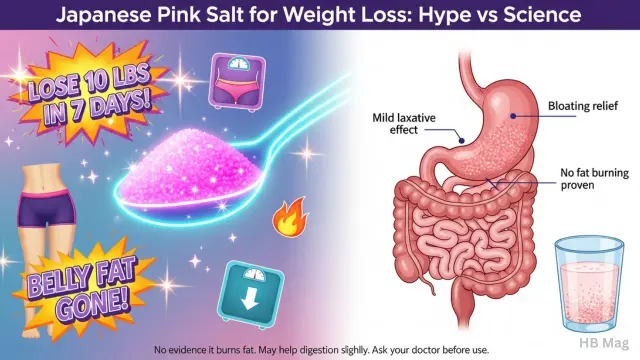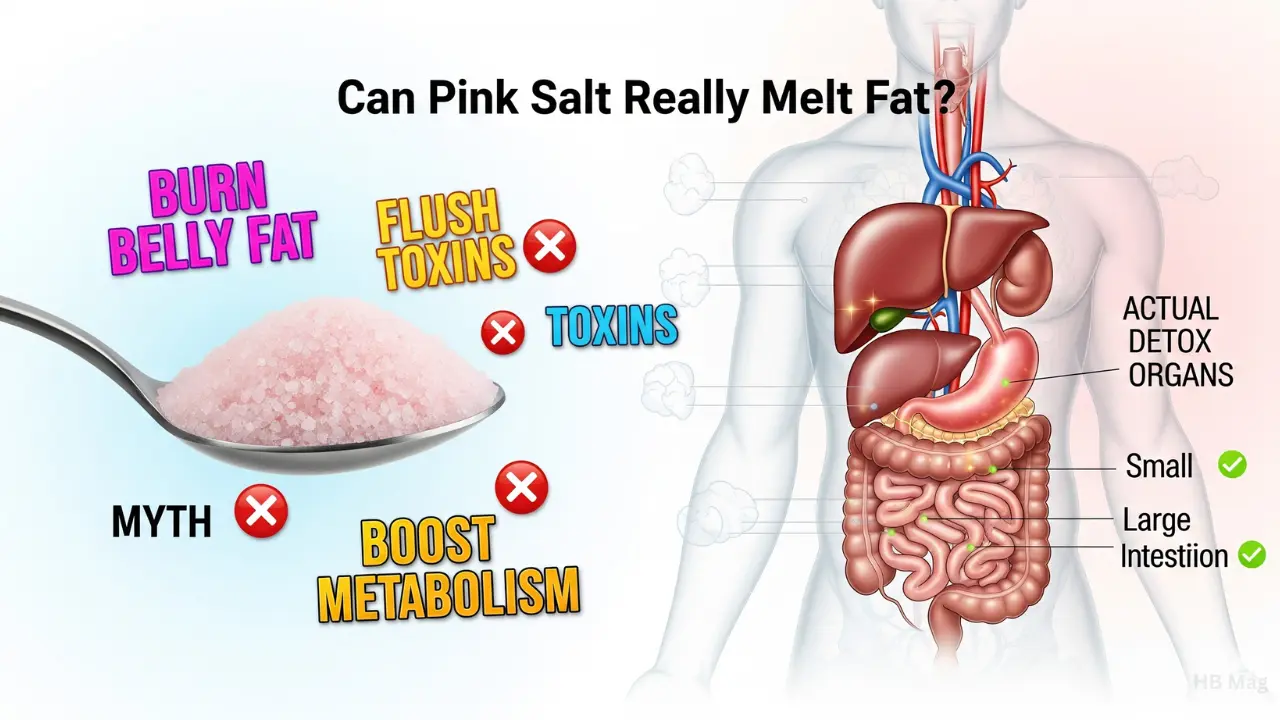Have you seen the viral health trend taking over social media? People are mixing a pinch of pink Himalayan salt into their morning water, claiming it’s a simple trick for losing weight. It sounds almost too good to be true, and when something seems like a magical fix, it’s natural to have questions. You want to know what’s real and what’s just hype.
We understand the hope behind this trend. Everyone is looking for an easy, effective way to support their health and weight loss journey. So, let’s break down the facts and figure out if pink salt for weight loss is a real solution or just another fleeting fad.
The Pink Salt ‘Trick’: What’s the Buzz All About?
The core of this trend is a simple morning ritual: add a small amount of pink Himalayan salt to a glass of warm water. Some versions of the pink salt weight loss recipe also include lemon juice or apple cider vinegar (ACV). The belief is that this combination, especially on an empty stomach, can “detox” your body, boost your metabolism, and help you burn fat.
But is there any truth to these claims? The idea is that the trace minerals in the salt, like potassium and magnesium, can somehow jump-start your body’s fat-burning processes. While these minerals are important for overall health, their role in this “trick” is often misunderstood.

The Science Says… It’s Complicated.
When we look at the science, the honest answer is that there is no scientific evidence that pink salt directly causes fat loss. The claims that it revs up your metabolism or breaks down fat cells are simply not backed by research. Pink salt is still mostly sodium chloride, just like regular table salt. The small amounts of other minerals it contains are not significant enough to have a direct impact on your weight.
While the trend has gained a lot of popularity, it’s important to separate the social media buzz from scientific facts. Pink salt is not a miracle solution, and it can’t replace a healthy diet and regular exercise.
Health Fact: The True Role of Hydration In Weight Loss
The most beneficial part of this trend may have nothing to do with the salt itself, but rather the action of drinking water. Hydration is a crucial, science-backed component of any weight loss plan.
Here’s why:
- It keeps you feeling full. Sometimes, your brain confuses thirst for hunger. Drinking a glass of water before a meal can help you feel more satisfied and eat less.
- It helps your body function. Proper hydration is essential for your body’s systems, including digestion and nutrient absorption. When your body is properly hydrated, it can perform at its best.
- It’s key for a healthy metabolism. A well-hydrated body is more efficient at burning calories. Even minor dehydration can slow down your metabolism, making it harder to reach your goals.
So, while the salt doesn’t work the way people claim, the habit of starting your day with a big glass of water is an excellent one.
What Pink Salt Can Actually Do for You
Although it’s not a magic weight loss solution, pink salt isn’t useless. Its potential benefits are more subtle and indirect. For example, some people find that a little salt can help with minor issues like water retention and bloating.
This can be especially true for individuals on low-carb or keto diets, where the body can lose electrolytes and water quickly. Adding a small amount of pink salt can help replenish these electrolytes, which in turn may reduce bloating and improve a sense of well-being. This might lead to feeling lighter, but it’s important to remember that this is water weight, not fat loss.

Is The Pink Salt Trick a Scam? The Side Effects and Risks You Need to Know
No, the pink salt trick isn’t a scam, but rather a wellness trend that’s been overhyped and misunderstood. However, it’s not without potential risks. The biggest risk comes from over-consuming sodium.
The main side effects of too much sodium intake include:
- High Blood Pressure: Consuming too much sodium can lead to high blood pressure, which is a major risk factor for heart disease and stroke.
- Kidney Strain: Your kidneys work hard to filter excess sodium from your body. Too much salt can overwork them and potentially cause long-term issues.
- Fluid Retention: This is a bit of a paradox. While a tiny amount of pink salt can help with bloating from electrolyte imbalance, too much salt will cause your body to hold onto water, leading to more bloating and puffiness.
This is why it’s so important to be aware of how much pink salt for weight loss you’re using.
How to Use Pink Salt Safely and Effectively (If You Choose To)
If you still want to try adding pink salt to your routine, it’s best to do it safely and in moderation. A typical recommendation is a quarter to half a teaspoon per day, diluted in a large glass of water. Remember, this is about supporting your overall health, not a quick-fix diet.
Here’s a simple pink salt recipe you can follow:
- Add 1/4 teaspoon of pink Himalayan salt to an 8-ounce glass of warm water.
- Stir until it dissolves.
- Drink this in the morning.
For people with high blood pressure, kidney issues, or other health concerns, it is crucial to consult a doctor before making any dietary changes.
Final Verdict: Our Opinion
The truth about pink salt for weight loss is that it’s not a magic bullet. It won’t melt belly fat overnight. The real benefits come from the supportive habits it promotes, like drinking more water and staying hydrated. These small, consistent changes are what truly build momentum and lead to lasting results.
So, if you’re looking for sustainable ways to improve your health, focus on the proven methods: a balanced diet with whole foods, regular physical activity, and drinking plenty of water. Pink salt might be a harmless addition to your kitchen, but your real power to lose weight lies in consistent, healthy choices. Let us know if you would like to explore other proven methods for weight management, like simple diet plans or home workout routines.
About The Author
We’re a small team of health writers, researchers, and wellness reviewers behind Healthy Beginnings Magazine. We spend our days digging into supplements, fact-checking claims, and testing what actually works—so you don’t have to. Our goal is simple: give you clear, honest, and useful information to help you make better health choices without all the hype.
ADVERTISEMENT


Recent Posts